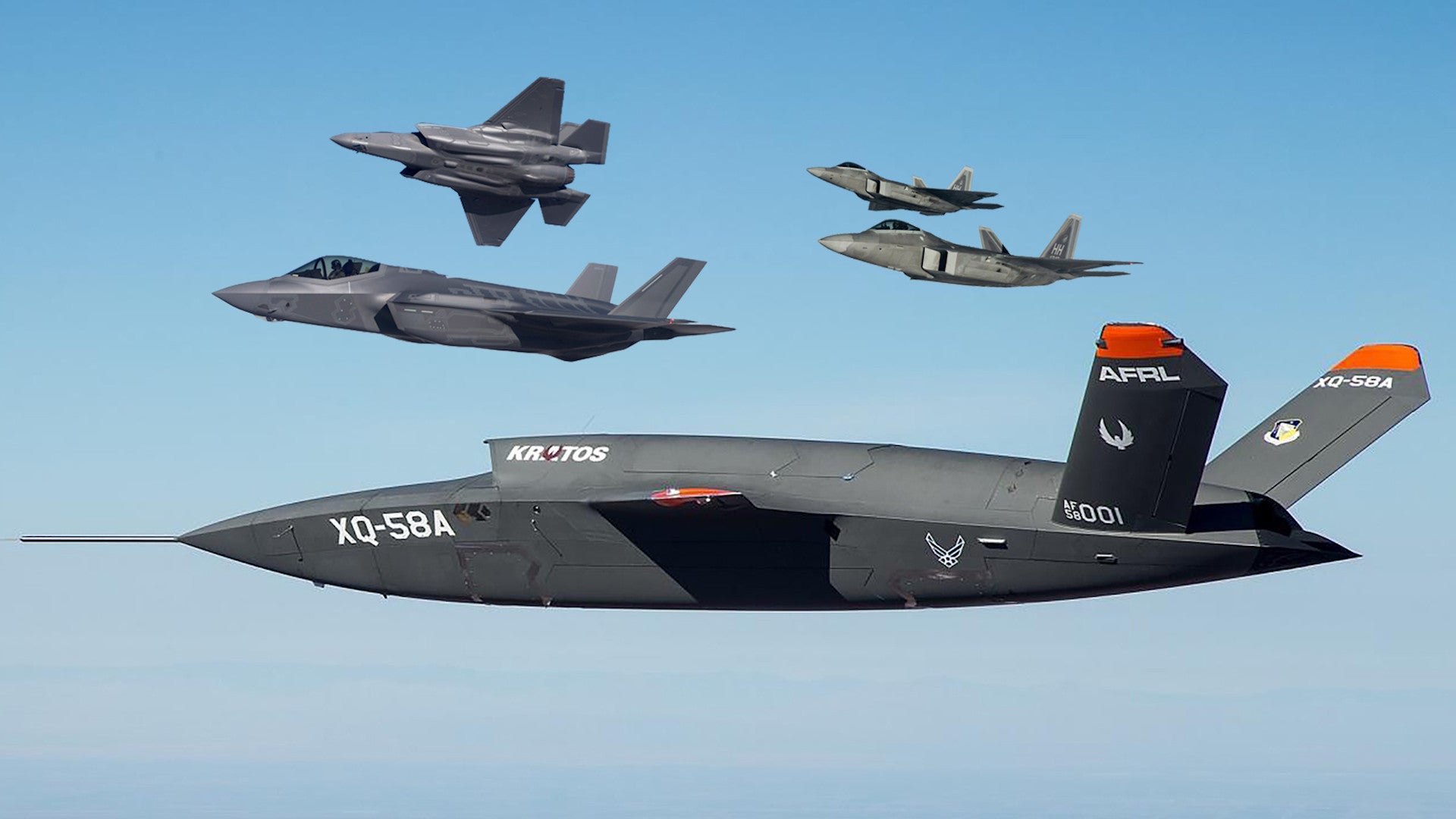The U.S. Air Force hopes to begin tests involving a Kratos XQ-58A Valkyrie stealthy unmanned aircraft acting as a data-fusion and relay gateway between its F-22 Raptors and F-35A Joint Strike Fighters early next year. This will follow a separate experiment to first demonstrate that the new data link, known presently as GatewayOne, can enable the two jets to share information without degrading their stealthy signatures, scheduled to occur next month.
Will Roper, the Assistant Secretary of the Air Force for Acquisition, Technology, and Logistics, outlined the plan, which is as part of what he called a “connect-a-thon” rapid experimentation concept, at a Defense Writers Group breakfast in Washington, D.C., on Nov. 12, 2019. Preston Dunlap, who holds the recently created position of “Chief Architect” within Roper’s office, had announced the first phase of the gateway experiment last week at a separate event that Defense One hosted.
“From zero to 60 in four months, [the goal] is to design and integrate the gateway so we can have something to triangulate,” Dunlap said on Nov. 7, 2019, according to Military.com. “For the first time, we want to be able to share data as we would like to in a relevant time and environment – and we want to operate in a highly contested environment – and ensure it gets [securely] from one place to the other.”

A major, long-standing issue for the Air Force is that its two premier stealth fighters can’t talk to each other effectively at all, let alone do so in their full stealth modes. F-22s and F-35s both use specialized data links designed to have what is called a “low probability of intercept/low probability of detection,” or LPI/LPD, meaning that opponents are unlikely to notice the transmissions or at least won’t be able to reliably trace them back to the aircraft sending them.
F-22s have a unique Intra-Flight Data Link (IFDL), an LPI/LPD system that can only share information with other Raptors, and can only receive information via the non-stealthy and much more common Link 16 waveform. F-35s have the stealthy Multifunction Advanced Data Link (MADL), which also can’t share data with any aircraft that doesn’t have this system, though they can share and receive information across Link 16. As it stands now, only the F-35 has MADL, though the Air Force does plan to integrate it into its existing B-2 Spirit stealth bombers and make it a feature on its future B-21 Raiders. Both MADL and IFDL are also line-of-sight systems.
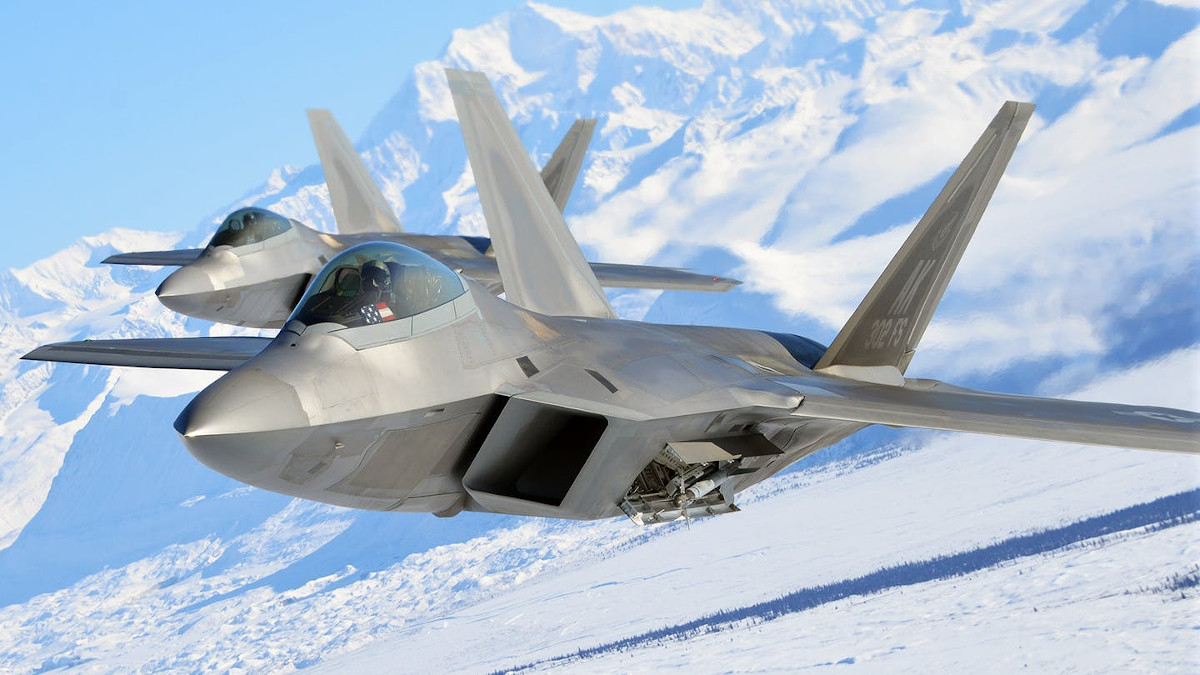
Lockheed Martin did demonstrate the ability of F-22s and F-35s to exchange information via Link 16 in 2013, as part of an experiment known as Project Missouri. However, so far, this has not become a standard capability for either aircraft.
GatewayOne’s job will be to act as a transfer node for information passing between IFDLs on F-22s and MADLs on F-35s, as well as any other stealth aircraft carrying the latter data link in the future. The Air Force wants the December tests to be a proof of concept showing that it can do this job. For this phase of experiments, the service plans to install the system on a test stand on the ground and have Raptors and Joint Strike Fighters flying above try to send information through it successfully.
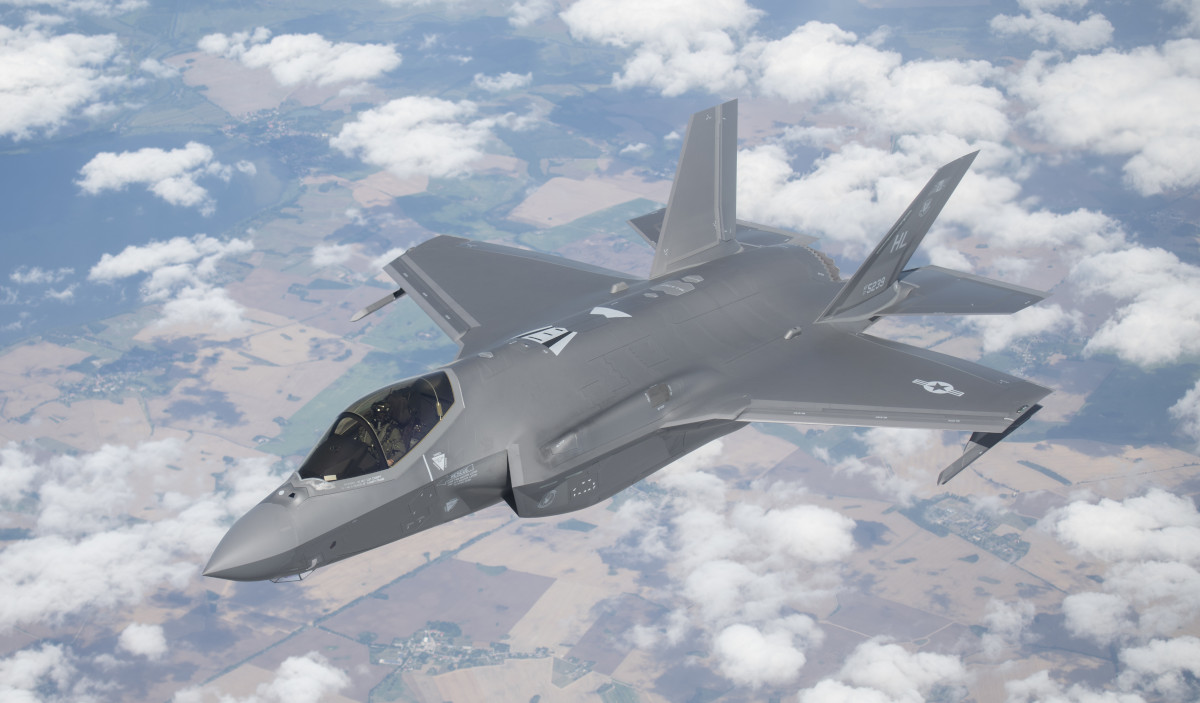
If GatewayOne works in that limited environment, the Air Force wants to then install it on an XQ-58A and test the system in the air sometime in April 2020. The service is working with Kratos to develop Valkyrie as a low-cost, stealthy platform that can work together tethered together with manned platforms in the “loyal wingman” role, as well as by itself or in networked swarms. These drones are supposed to be what the Air Force describes as “attritable,” meaning that they are cheap enough that commanders do not have to worry as much about whether or not they survive a mission.
What might come after that is unclear, but it is possible that this system could find its way onto various other platforms, manned and unmanned, to provide this capability. This would be similar in many respects to what has happened to the existing Battlefield Airborne Communication Node (BACN) communications hub, which can handle a wide variety of waveforms, including Link 16 and the Situational Awareness Data Link (SADL), the latter being another popular U.S. military data transfer system. The Air Force operates manned Bombardier E-11A and unmanned EQ-4B Global Hawk aircraft equipped with BACN.

There is also the secretive Talon HATE pod, something you can read about more here. The Air Force is developing this system to help serve as a point of exchange for information between F-22s and F-15C/D Eagles and then on to other assets in the battlespace and beyond.
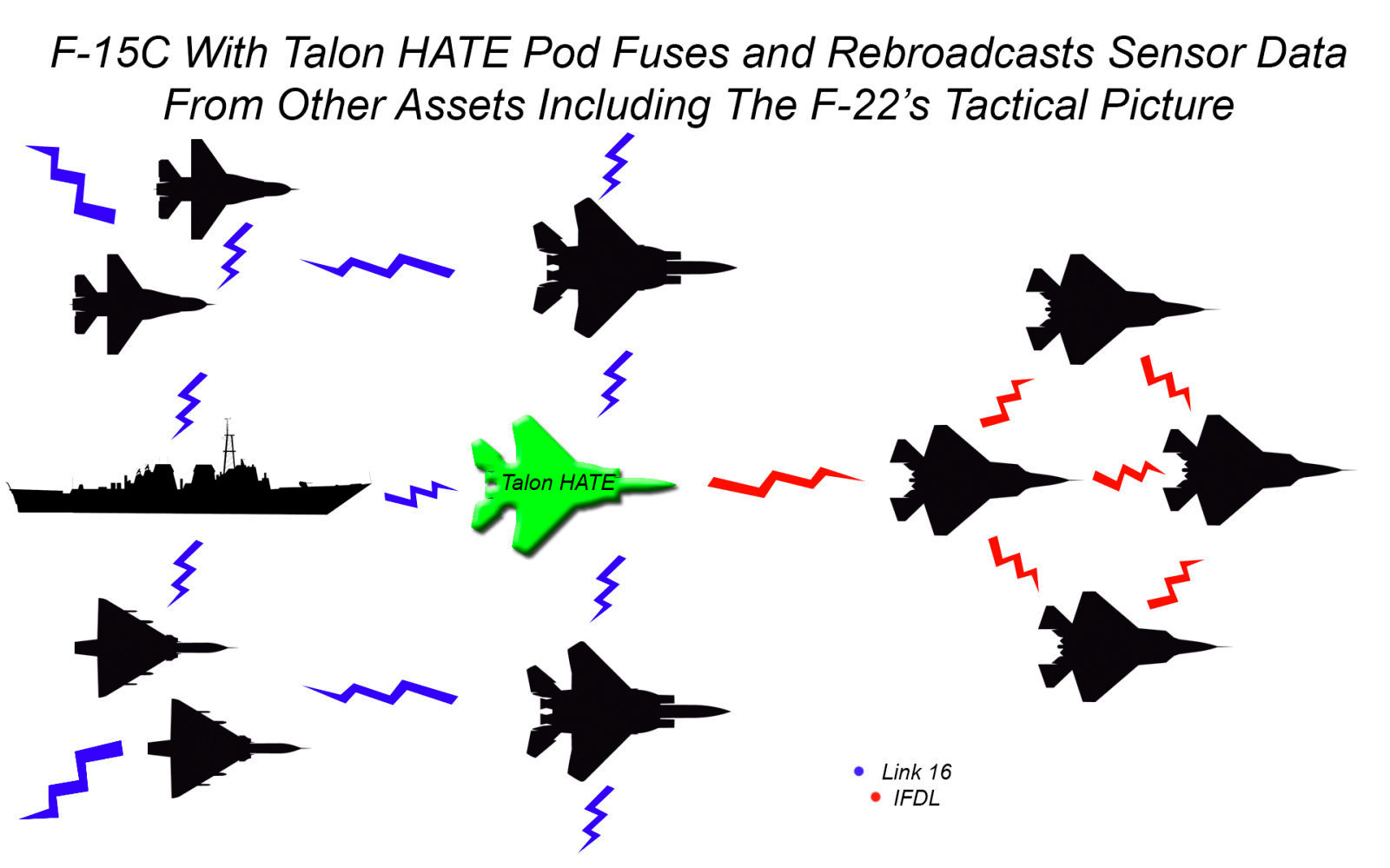
The service, in cooperation with Lockheed Martin, has also tested the U-2S Dragon Lady spy plane as a communications hub on an experimental basis. Just this year, as part of a test known as Project Riot, a U-2S acted a transfer node between an F-35 and a ground control station. The scenario involved the Joint Strike Fighter detecting a ballistic missile launch and feeding information to a missile defense command center to help with targeting that threat.
There is already a separate concept operation for F-35 data sharing that involves “daisy-chaining” information from one Joint Strike Fighter to another via MADL until it reaches an aircraft a safe distance away from the center of the action. That aircraft can then broadcast it onward to other platforms using Link 16 or up to a satellite above.
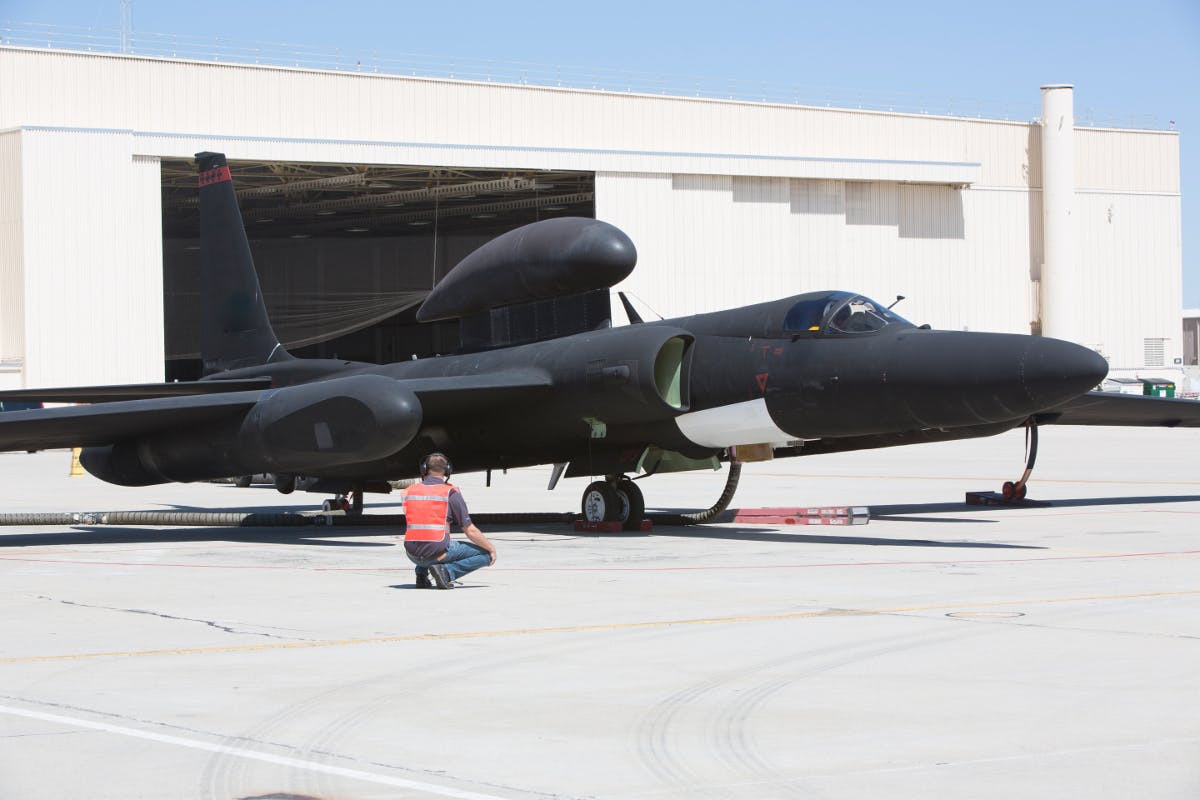
It’s hard to overstate how important it is for F-22s and F-35s to be able to rapidly exchange data with each other, as well as other platforms, while still maintaining their stealthy characteristics. Both aircraft have very powerful and multi-faceted sensor suites that can gather an immense amount of information to give their pilots a very good sense of what is going on in the battlespace around them. These aircraft often already act as “quarterbacks” for large aerial operations, including coalition efforts that also involve allied forces. In many cases, they are relegated to using voice directions to give crews in lesser aircraft directions, and even that may not be possible during a high-end fight.
If these two fleets can more readily share that information between each other and with other aircraft, as well as other assets, including ships and ground forces, they can help build an even more complete operational picture. It can also allow these different assets to exchange targeting quality information to actually engage threats. This means that a stealth platform can use information from third-party sensors while using its own emitters as sparingly as possible to reduce its own vulnerability.
Stealthy aircraft can also use their LPI/LPD sensors once they have penetrated into densely protected areas to find targets and then feed that information to non-stealthy platforms, which can then employ stand-off weapons from a safe distance against those targets. The U.S. Navy is also exploring similar concepts of operation as part of its Cooperative Engagement Capability and Naval Integrated Fire Control-Counter Air (NIFC-CA) programs, which you can read about in more detail in this past War Zone piece.

Installing this capability on the XQ-58A makes good sense, too. Acting as a low-cost communications and data relay in high-risk environments, as well as helping push information from MADL and IFDL over the horizon, sounds like a perfect job for such a platform. Being able to process signals from either data link could also enable F-22 and F-35 pilots to exchange control of one or more Valkyries operating as a loyal wingman on the fly, as well.
If GatewayOne works on the relatively small XQ-58A, the Air Force could likely migrate GatewayOne onto other platforms, as well, making the capability more widely available. Assistant Secretary of the Air Force Roper also made clear that he is looking at this particular connect-a-thon as a concept for driving rapid innovation and procurement, something he has become an outspoken advocate of, in general. If this works, he is hoping that it could help in the development and acquisition of new communications solutions, as well as other new capabilities, including low-cost satellite networks, which could broadly help the service expand its ability to share information and reduce the vulnerability of these critical data-sharing networks to both physical and non-kinetic attacks.
“We’re making it up as we go, right? There’s never been anything like this,” Roper said at the Defense Writers Group breakfast, according to Defense News. “We need a way for people to propose connections and get into the pipeline.”
“The good news about that is [that Congress and the Pentagon] don’t really have to believe us for very long,” he continued. “Just let us get through a few connect-a-thon cycles and if we’re failing miserably, then that should tell you something about the future of the program.”
If the GatewayOne effort proves successful it could be an extremely important step forward for how F-22s and F-35s, along with the XQ-58A, work with each other, as well as other U.S. military assets. This, in turn, could have a significant impact on how American forces share information across the battlefield, in general.
Contact the author: joe@thedrive.com
